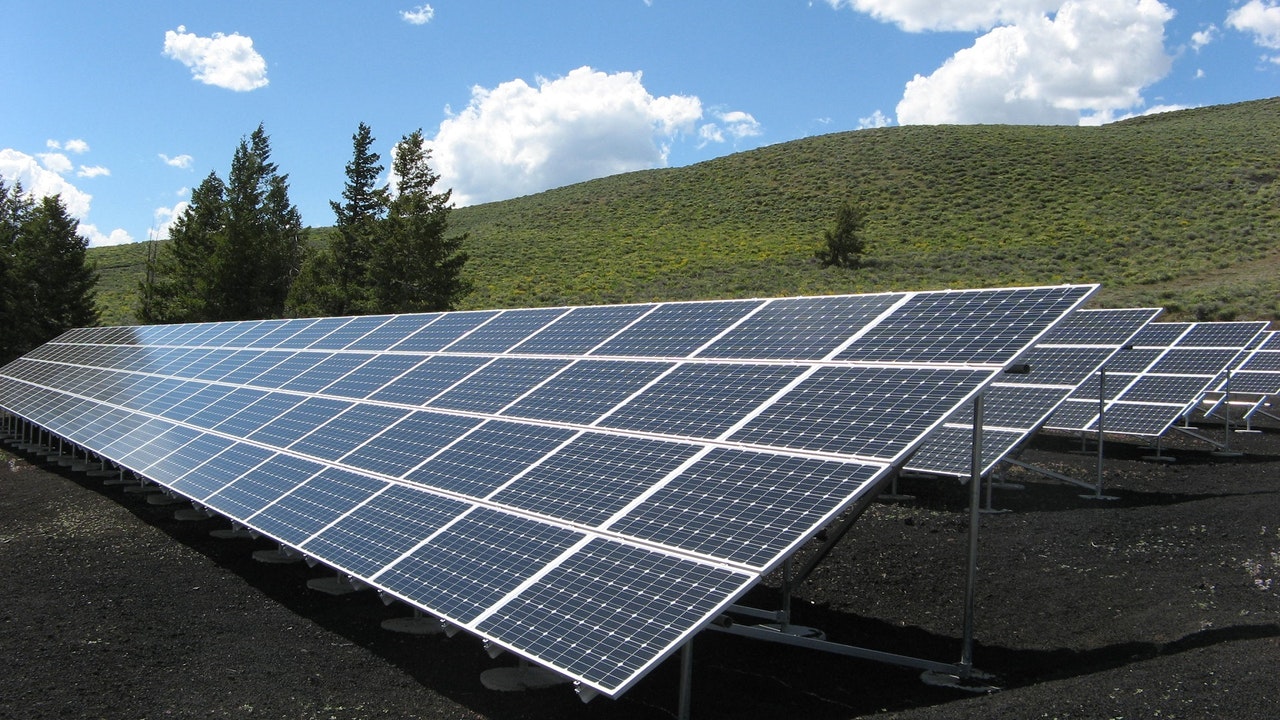
Media outlet headlines and social media posts galore last week came out with a force for the following announcement: the Biden Administration is talking about nearly half of U.S. electricity coming from solar power by 2050. Clean energy advocates, climate warriors, and regular consumers alike raised their eyebrows at such a bold pronouncement. And as too often happens in today’s environment of soundbite news and Tweet-length hot takes, the debate raged on before many people bothered to dig into the headline and what was behind it.
Whether you find yourself excited and optimistic about increasing the energy supply coming from the sun or if you turn a skeptical eye towards such bold claims, informing your opinion based on the facts behind the story needs to be a top priority. So, let’s pump the breaks on the instinct towards sensationalism and make sure we know what the story is being discussed.
When headlines across the web proclaimed the Biden administration was talking nearly half of U.S. electricity supplies coming from solar energy by mid-century, the impetus was the release of the Solar Futures Study from the U.S. Department of Energy. The crux of the headlines that you may have read came from the central thesis that America can feasibly (in terms of technology and economics) get 45% (so not quite half) of its power supply from solar energy alone by 2050.
Despite the world of progress, the solar industry has made from failing to be even a blip on the radar as recently as 2010, this amount of solar penetration would still represent a mobilization the world has never seen before: solar in the United States today represents less than 3% of total generation. According to the Energy Information Administration, the business-as-usual forecasts predict that solar would only reach 20% of all power generation by 2050.
Given these facts, the conclusions from the DOE Solar Futures Study represent more than doubling that market share. So, how does this study end up reaching that conclusion?
The Solar Futures Study was produced by the Solar Energy Technologies Office in conjunction with the National Renewable Energy Laboratory, both under the umbrella of the U.S. Department of Energy. Even if you’re no energy wonk yourself, the DOE Solar Futures Study (or at least the executive summary) is worth a read. The notable assumptions and conclusions behind that noteworthy 45% solar by 2050 figure include the following:
The key point to note in all the above, and what your friends on Facebook may have overlooked before resharing or commenting, was that this was a study about what was possible or feasible. This study did not amount to a mandate, nor even a forecast of what was expected to happen under a business-as-usual scenario. The headlines that suggested this study amounted to Biden requiring or predicting nearly half of energy would come from solar are not telling the full story. The outcomes of this study certainly paint the types of aspirations the administration holds, but these goals will not be met without aggressive action behind them.
That said, the way the U.S. energy policy tends to work is that this study could very well be the first step towards those necessary actions: put out the science, receive feedback (both positive and negative), and use that dialogue that as an outline of what might be possible to mandate or fund in the future. This study could then be the reference point for future orders or legislation. Given that possibility, the conclusions of this study are still important for energy stakeholders to read, react, and consider. As noted, the study highlighted what was needed policy-wise to change before such a solar future to come into fruition, as lofty declarations beget ambitious goals perhaps beget aggressive success. But what the realities will be in terms of action and results both remain to be seen.
Clean energy is becoming more important to stakeholders across the grid, not just because governments are mandating or incentivizing it, but because power providers are recognizing that doing so is the lower cost option in the long run. This clean energy transition is also the best way for the energy sector to prevent the worst impacts of the climate crisis.
Customers in the electricity supply chain are among the biggest drivers of clean energy demand, including solar, which is why the availability of deregulated markets that allow customers to choose power providers more deeply committed to a solar future is important. For example, if you are in New York, New Jersey, Pennsylvania, Ohio, Illinois, Maryland, Connecticut, Massachusetts, and Washington DC, Atlantic Energy is one of the options you may have as an alternative energy provider. Contact us today to learn if you’re eligible and find out what great programs, prices, and clean energy services we can offer you thanks to the system of energy choice!